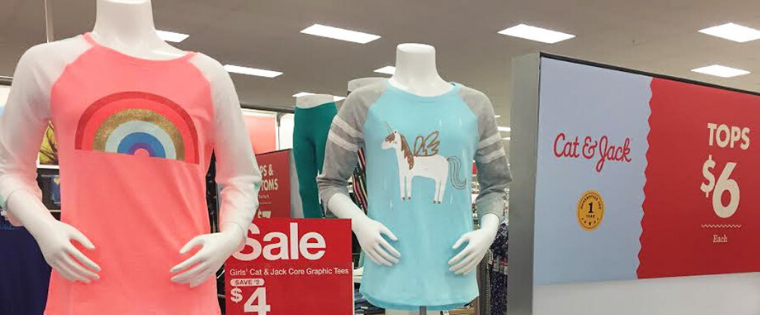Re-Evaluating Private Label

Might damage from the Coronavirus help drive retailers to take a harder look at their strategies for private labels and DTRs?
Retailers in recent years have increasingly devoted a growing part of their business to private label products – Target’s Cat & Jack children’s apparel, for example, generates more than $1 billion in annual sales – that can’t be comparison-shopped elsewhere, and allow retailers to control the supply chain. That boosts margins – 25-30% better than retailers get for national brands, according to Deloitte – but also puts the retailer on the hook for all marketing and markdown costs, as well as ownership of the inventory.
Attractive model
It’s a really attractive model when it runs smoothly, and, according to many licensors and licensees, has been sucking up increasing amounts of shelf space from more broadly distributed brands. Historically, for many retailers, private label has ebbed and flowed in cycles.
The sales downturn of the last few months may be giving retailers some pause. “We’re seeing more of a shift to national brands and licensed brands, as the retailers attempt to reduce the risk of inventory commitments on their own apparel and accessory brands,” says Concept One CEO Sam Hafif.
Comfort factor
And there’s also the comfort factor of national brands. At the start of the pandemic in the U.S., retailers, especially those selling apparel, appeared to pull back on private label and shift focus to national brands with instant name recognition, says Jefferies analyst Janine Stichter.
It’s part of a broader evaluation of their commitments, whether private labels, exclusives or DTRs. “I think retailers are taking the time during the pandemic to decide ‘Is this the right exclusive for us, and just because we have sold it for 20 years why should we continue if sales are declining?’” says one licensing agency executive. “I don’t think there is a lessening of interest or focus on DTRs, but rather a determining of whether there is still enough of an ROI to continue them. And this may be done on a retailer-by-retailer, buyer-by-buyer, and category-by-category basis.”
To be sure, private label is a force within many businesses. For example, about 40% of Kohls’ business has been generated by “proprietary brands,” which include private labels as well as exclusives such as DTRs. That number has actually been dropping the past few years, but is still a major chunk of business.
Some major retailers are looking at realigning their brand structures. Kohl’s, for one, is dropping eight brands from its women’s business while retaining its Vera Wang and Lauren Conrad DTRs. It also launched an Elizabeth and James women’s brand.
Meanwhile, Bed Bath & Beyond last week brought in a new senior executive to “lead a newly formed team that expects to develop and launch a portfolio of customer inspired owned brands from 2021.” Significantly, Mark Tritton, who headed Target’s private label push, joined Bed Bath & Beyond last fall, and has been expected to make a private label push. The company “plans to introduce an array of owned brands in 2021 with the anticipation that the portfolio will expand over time.”




